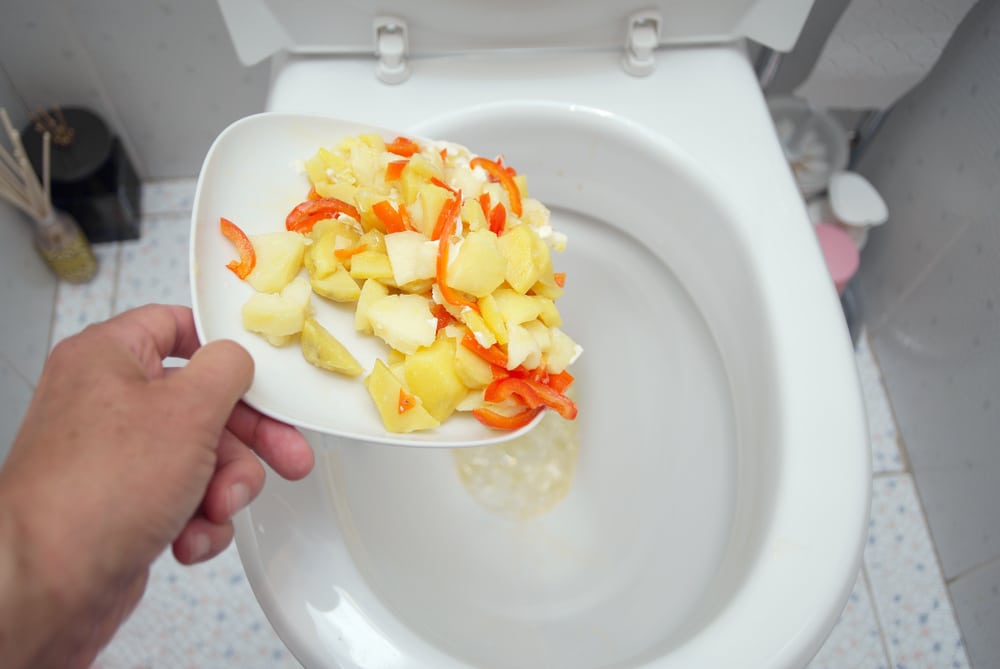We've unearthed this post pertaining to Think Twice Before Flushing Food Down Your Toilet down the page on the internet and thought it made sense to relate it with you on this page.

Intro
Many people are commonly confronted with the predicament of what to do with food waste, specifically when it comes to leftovers or scraps. One common question that develops is whether it's fine to flush food down the commode. In this write-up, we'll look into the reasons why people could think about purging food, the effects of doing so, and alternate approaches for appropriate disposal.
Reasons that people might take into consideration flushing food
Lack of understanding
Some people might not know the prospective injury triggered by purging food down the toilet. They may mistakenly think that it's a safe technique.
Convenience
Flushing food down the toilet might look like a quick and simple remedy to taking care of undesirable scraps, especially when there's no close-by garbage can available.
Negligence
Sometimes, people may just choose to flush food out of sheer laziness, without considering the effects of their actions.
Effects of flushing food down the bathroom
Ecological effect
Food waste that winds up in waterways can contribute to air pollution and harm water environments. In addition, the water utilized to flush food can strain water resources.
Plumbing problems
Flushing food can bring about blocked pipes and drains, triggering pricey plumbing repair services and hassles.
Types of food that ought to not be flushed
Coarse foods
Foods with fibrous textures such as celery or corn husks can get tangled in pipelines and create clogs.
Starchy foods
Starchy foods like pasta and rice can soak up water and swell, leading to obstructions in pipelines.
Oils and fats
Greasy foods like bacon or food preparation oils should never ever be purged down the commode as they can solidify and create blockages.
Correct disposal methods for food waste
Utilizing a garbage disposal
For homes furnished with garbage disposals, food scraps can be ground up and flushed through the plumbing system. Nevertheless, not all foods appropriate for disposal in this manner.
Recycling
Specific food packaging materials can be reused, reducing waste and reducing environmental impact.
Composting
Composting is a green means to get rid of food waste. Organic materials can be composted and made use of to improve dirt for gardening.
The significance of proper waste monitoring
Minimizing environmental damage
Correct waste administration techniques, such as composting and recycling, assistance decrease contamination and maintain natural resources for future generations.
Shielding pipes systems
By avoiding the method of flushing food down the commode, home owners can prevent pricey pipes repair work and keep the integrity of their pipes systems.
Verdict
In conclusion, while it may be tempting to purge food down the commode for convenience, it is very important to recognize the possible effects of this action. By taking on appropriate waste administration techniques and dealing with food waste responsibly, individuals can contribute to healthier pipes systems and a cleaner atmosphere for all.
FLUSH FOOD DOWN THE TOILET?
FLUSHING FOOD CAN CAUSE BLOCKED DRAINS IN YOUR HOME
All of the plumbing fixtures in your home are connected to the same sewer pipe outside of your home. This outdoor sewer pipe is responsible for transporting all the wastewater from your home to the Council sewer mains. Even small pieces of food that go down the kitchen sink can cause problems for your sewer. It should therefore be obvious that flushing larger bits of food, such as meat, risks a clog in either the toilet itself or the sewer pipes. Flushing greasy food is even more problematic because oil coagulates when it cools, coating the interior lining of your pipes.
THE TOILET IS NOT A BIN
Food isn’t the only thing that people shouldn’t be flushing down the toilet. People use the toilet to dispose of all kinds of things such as tampons, makeup wipes, dental floss, kitty litter and even underwear. Water goes to great lengths to educate residents about the high costs and stress placed on wastewater treatment systems simply from people flushing the wrong stuff down the toilet. It costs taxpayers millions of dollars each year, and homeowners thousands in blocked drain repairs.
FLUSHING FOOD IS A WASTE OF WATER
Flushing food is a waste of our most precious resource - water. In June this year Level 1 water restrictions were introduced to protect water supply from drought conditions. Much of New South Wales continues to be affected by prolonged drought with recent figures revealing up to 97 per cent of the state remains in drought. Depending on whether you have a single or dual flush toilet, every single flush uses between five and 11 litres of water. In the current climate this is a huge amount of water to be wasting on flushing food that should be placed in the bin (or better yet, the compost).
https://www.jabplumbingsolutions.com.au/blog/can-you-flush-food-down-the-toilet

I'm very intrigued by and I am assuming you enjoyed reading the new page. Please set aside a second to share this blog posting if you liked it. Many thanks for being here. Come back soon.
Call Today